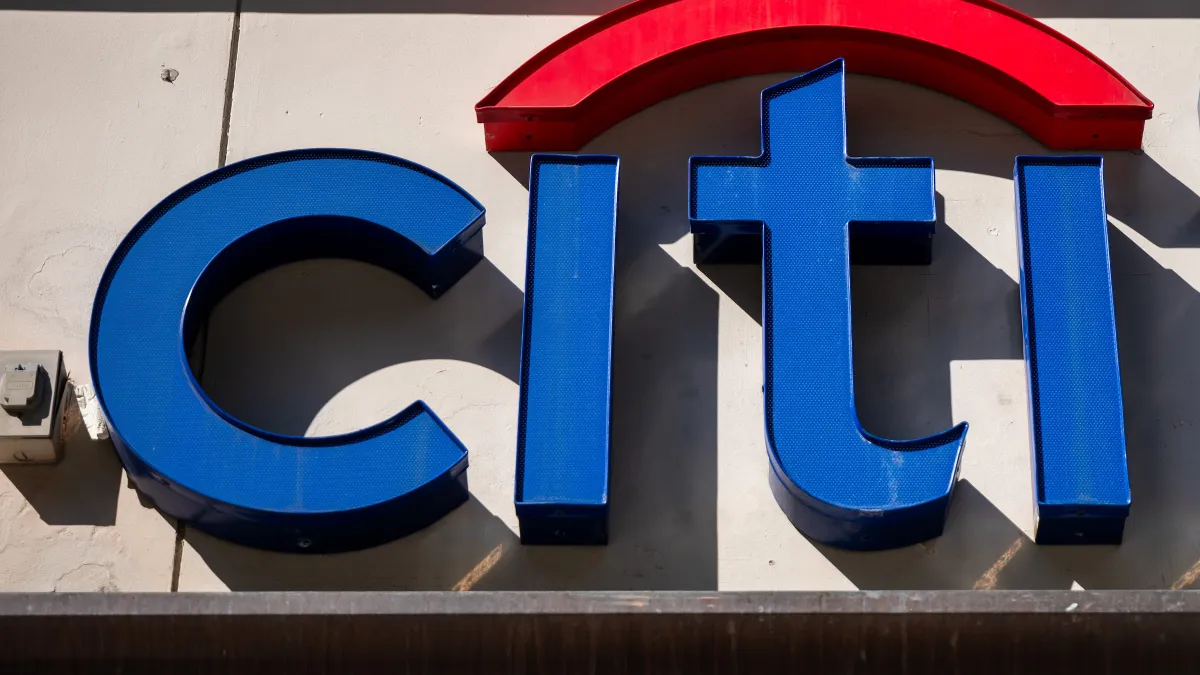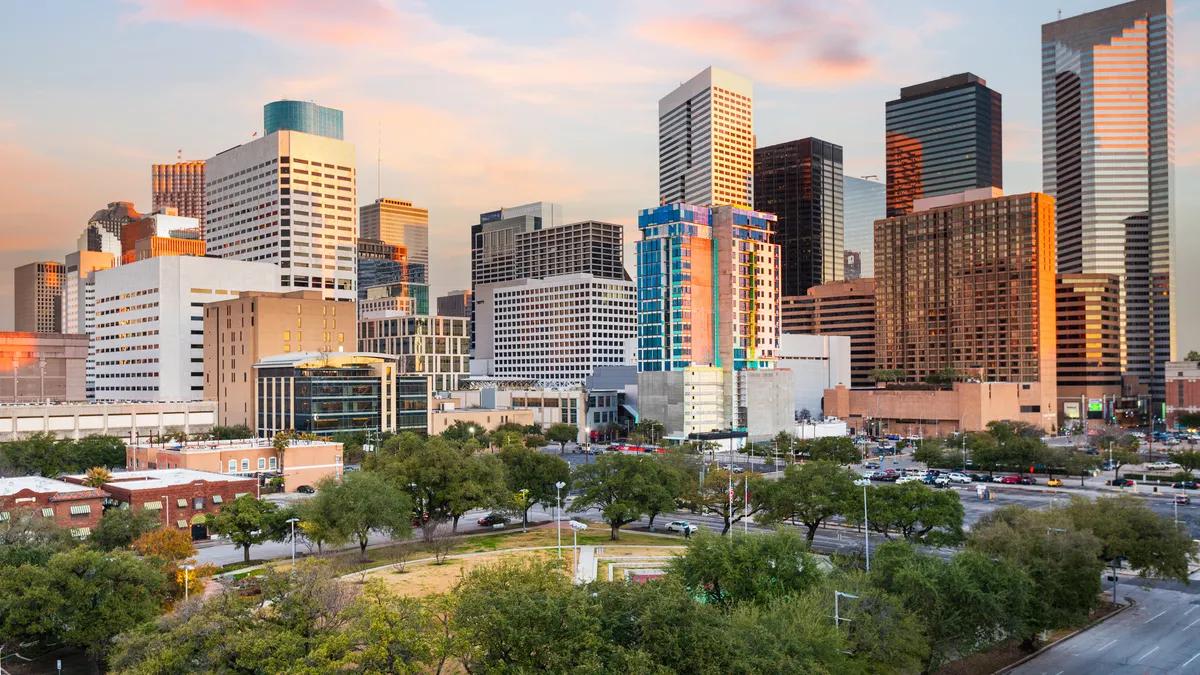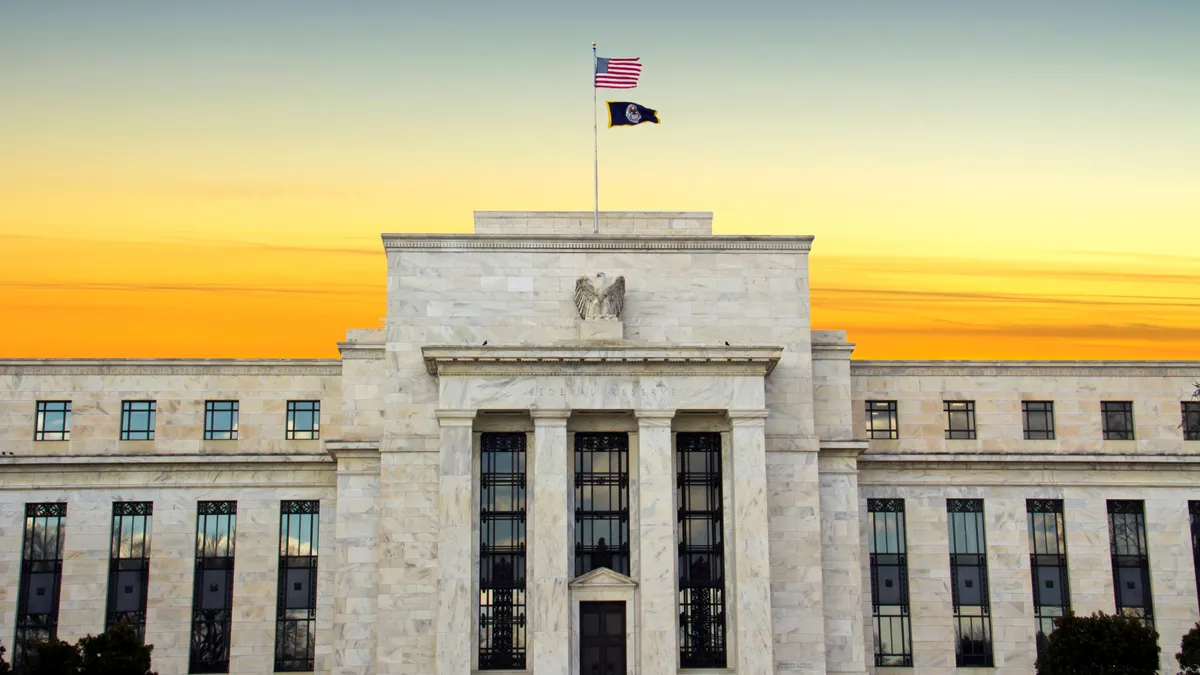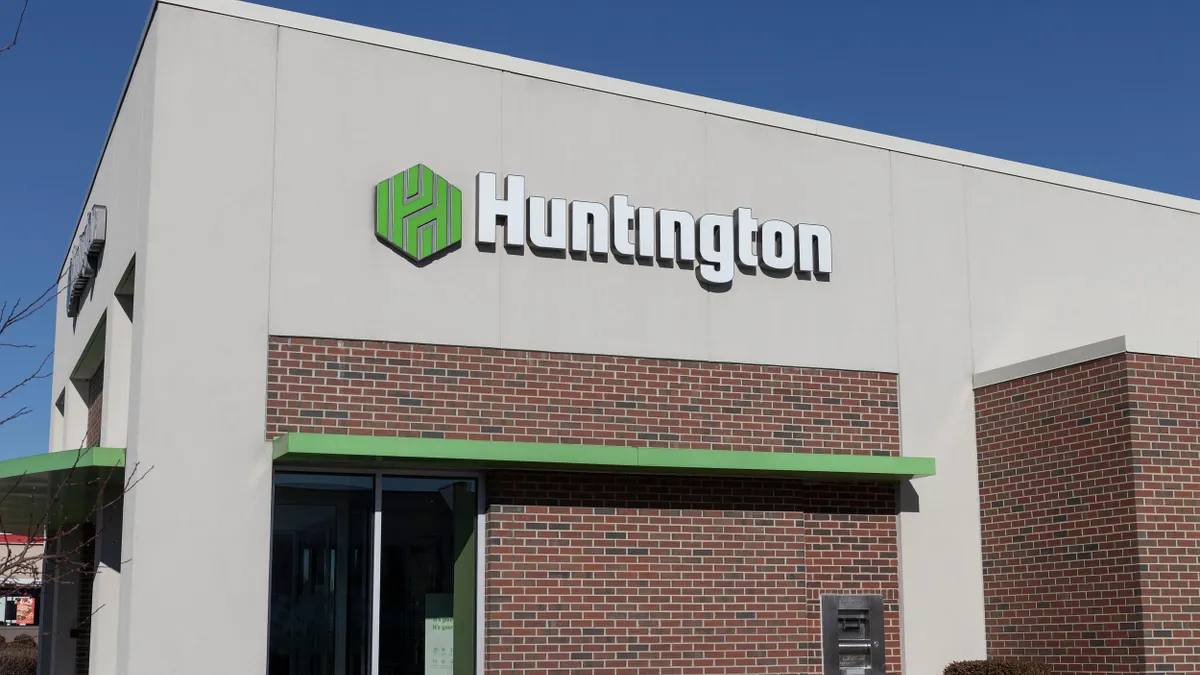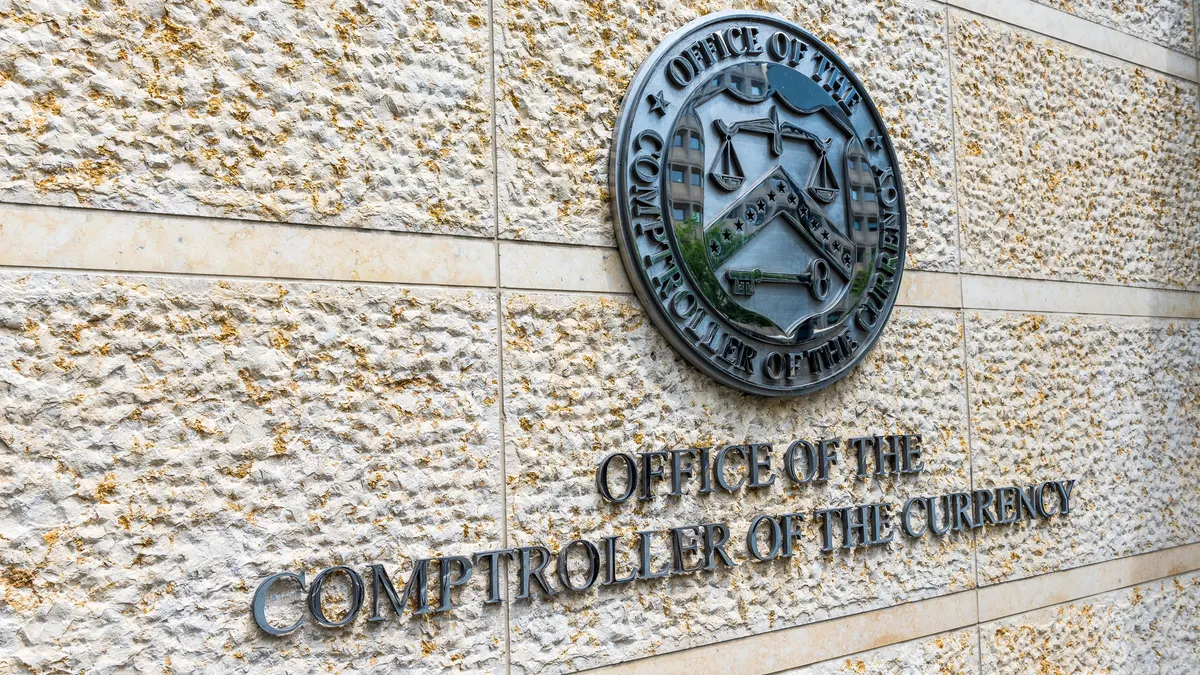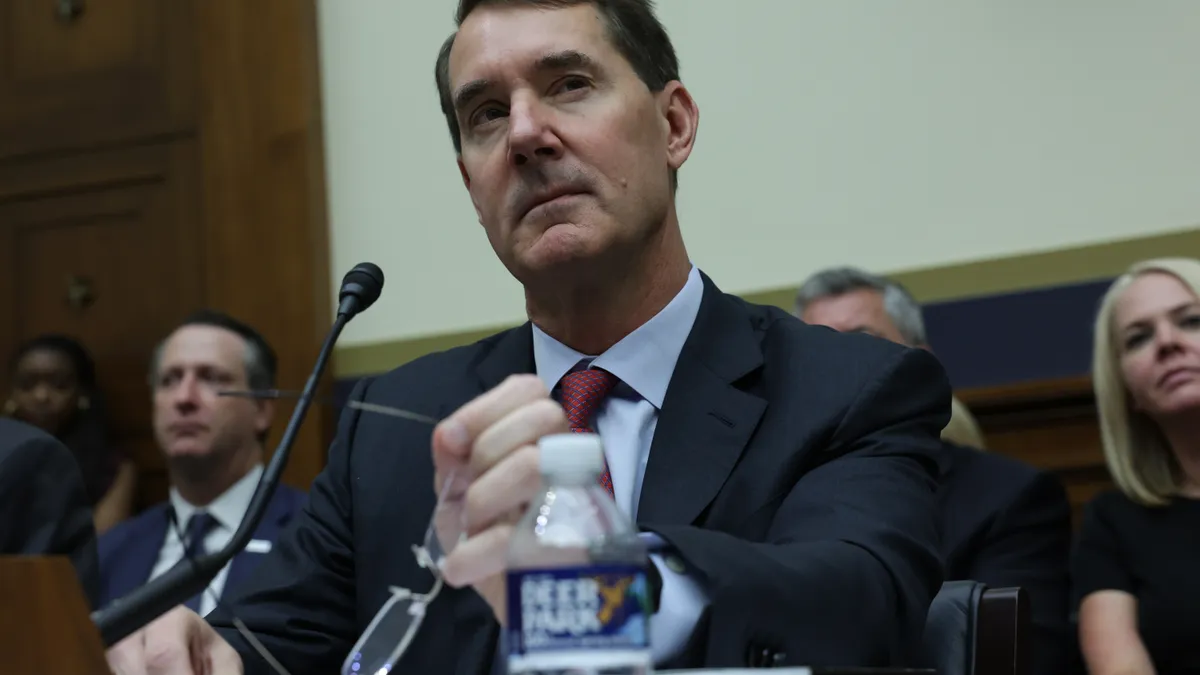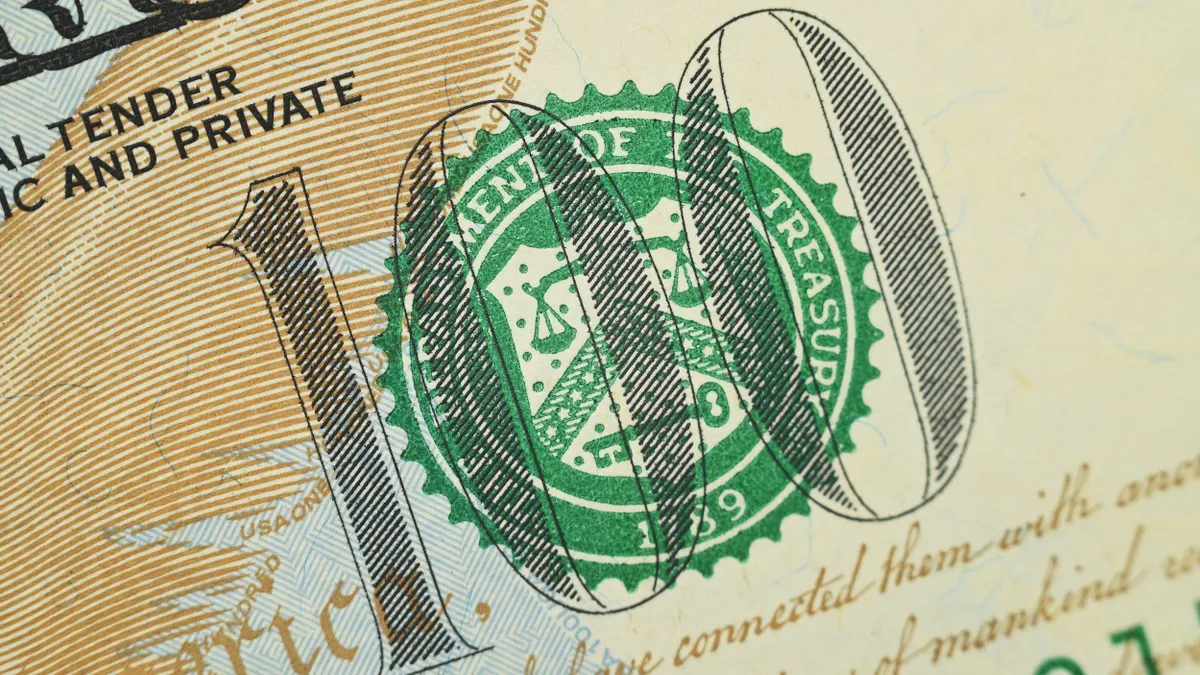As new COVID-19 cases decline from the towering heights reached earlier this month, big banks are now setting definitive return dates in their quest to bring employees back into the physical workplace.
Throughout 2021, COVID-19 variants posed major headwinds to banks hoping to bring workers back to the office.
The spiraling caseload brought on by the delta variant last summer forced many banks to alter their game plans and shutter offices.
Afterward, banks across the country adopted widely varying stances on working from home.
Some firms have maintained wait-and-see approaches. Wells Fargo, for example, has continually postponed plans to return to the office, with five delays since August.
And Capital One gave up on prognosticating a return timeline in October. The McLean, Virginia-based firm said it would give employees 30 days’ notice before reopening offices.
By contrast, JPMorgan Chase opened its U.S. offices to all employees in May — often on hybrid schedules — and most had resumed in-person work by late November, according to The New York Times.
Morgan Stanley CEO James Gorman in June told a financial services conference, “If you can go to a restaurant in New York City, you can come into the office," adding, "[By] Labor Day, I’ll be very disappointed if people haven’t found their way into the office and then we’ll have a different kind of conversation."
Even Citi — among the first banks to float a hybrid schedule back in March — asked workers in September to come into the office at least two days a week. As COVID-19 cases declined, in-person work seemed to be re-emerging as the industry norm.
Omicron variant changed plans
But the breakout of the omicron variant in the U.S. forced many businesses, including banks, to shutter offices once again. A mid-December survey by Gartner found that 44% of companies delayed or altered their plans to work in person.
A slew of Wall Street giants, ahead of the holidays, began advising employees to work from home.
Even return-to-office hard-chargers like Gorman capitulated amid the mounting public health crisis.
“I was wrong on this,” Gorman said in December. “I thought we would have been out of it past Labor Day and we’re not.
“I think we’ll still be in it through most of next year,” he added. “Everybody’s still finding their way and then you get the omicron variant; who knows, we’ll have pi, we’ll have theta and epsilon, and we’ll eventually run out letters of the alphabet. It’s continuing to be an issue.”
Goldman Sachs CEO David Solomon, who once called remote work an “aberration,” asked employees to work from home until Jan. 18 if possible. The firm pushed back its return date again in January, and reopening is now slated for Feb. 1.
Bank of America permitted employees at New York City offices to work from home over the holidays, and then in January, the Charlotte, North Carolina-based firm encouraged employees to stay home a while longer. That policy remained in effect as of Jan. 23, according to The Charlotte Observer.
JPMorgan Chase, Citi and TD, likewise, advised employees to work from home at the end of the year.
Now, as many employees kick off the first weeks of 2022 from their home offices, several banks are again eager to usher workers into the office as soon as possible.
JPMorgan told employees in a memo, “we expect everyone to return to their in-office schedule no later than February 1,” according to CNN.
Citi and BNP Paribas have both marked Feb. 7 to start bringing workers back into the office.
The French giant plans to gradually ramp up in-person work capacity to 50%, an employee told Reuters. The bank had an office capacity around 25% to 30% at the end of 2021, the source said.
And as in-person work regulations ease in the U.K., a growing number of firms are calling London-based bankers back into the office.
“We are now free to gather in our offices, without restriction, where we are better able to generate the energy and collaborative spirit on which Citi thrives,” the bank's Europe, Middle East and Africa CEO David Livingstone and U.K. chief James Bardrick wrote in an email to bank employees seen by Bloomberg. JPMorgan also joined in the call to return London bankers to their desks.
But COVID-19 cases remain high — and some firms have employed a new tool to prod workers’ return: vaccine mandates.
Keeping the office safe
Several Wall Street firms have set definitive dates for when they expect workers to report vaccination and booster statuses to retain employment.
Citi, for example, said it would fire workers who did not upload their vaccination card or request an exemption by Jan. 14. The bank gave a $200 “thank you” to employees who provided proof of inoculation by Dec. 8.
The bank's human resources chief said in a LinkedIn post Jan. 13 that it had achieved 99% compliance with the policy, although at least one employee was said to have opted to quit rather than receive the jab.
JPMorgan, until mid-December, permitted unvaccinated employees to work in its office buildings as long as they were tested for COVID-19 semiweekly. In response to a New York State Department of Health mandate, JPMorgan began to require that everyone entering nine Manhattan office buildings be vaccinated.
Still, the bank opted to let local restriction dictate its vaccination rules rather than adopt a one-size-fits-all approach.
“Unlike any other policy we’ve ever had, we’re not trying to be consistent,” JPMorgan CEO Jamie Dimon told CNBC.
Goldman Sachs will require all employees returning in person to work Feb. 1 to be not only vaccinated but boosted, CNN reported. Everyone entering Goldman Sachs offices will be subject to COVID-19 testing twice weekly.
Morgan Stanley began restricting unvaccinated people from entering its New York City and Westchester County offices since July, and has required U.S.-based employees to provide proof of COVID-19 vaccination since October.
Bank of America workers are not required to get vaccinated, but they must wear masks and get tested, according to The Charlotte Observer.
That outlet said fellow Charlotte-based bank Truist is tracking the number of unvaccinated remote workers, though most of the bank’s office workers are still working remotely.




